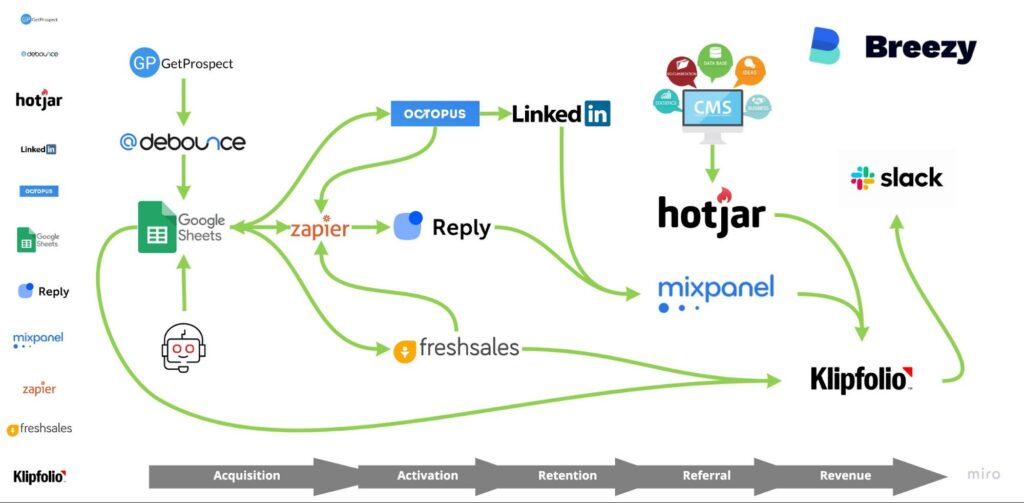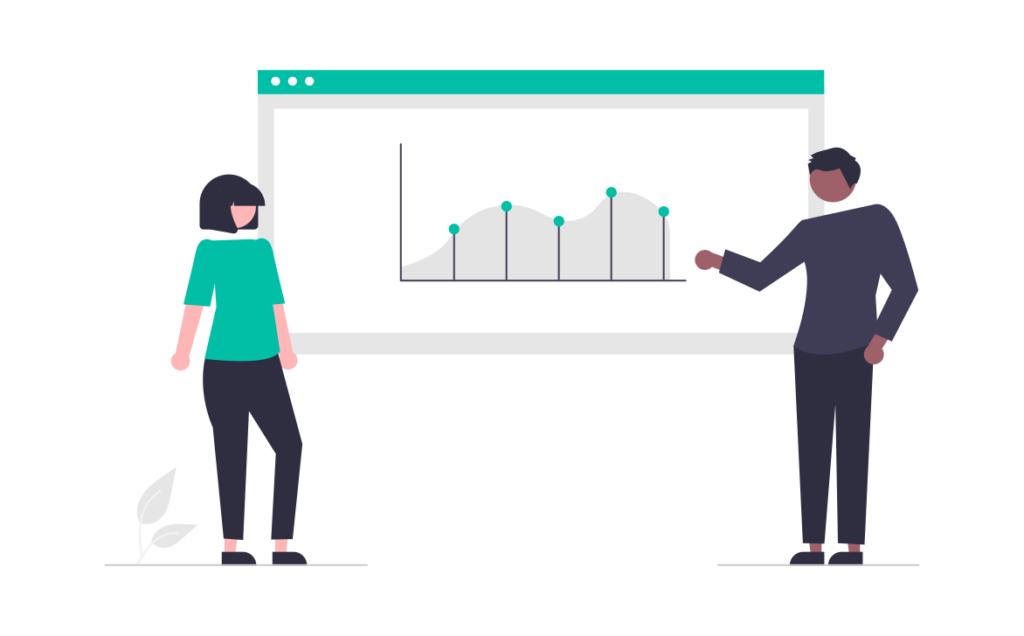The Best Martech Stack For Your Business. How To Find It, Build It & Use It.

What Is A Martech Stack?
A martech stack is your utility belt of interconnected tools that pass data between them to give you a holistic, detailed, accurate view of the performance of every stage of your marketing funnel. Martech stacks are useful for B2B and B2C companies, and they can look very different depending on the sector and business model.
We’ll walk you through the steps you need to take to build your best possible martech stack, and make the most out of it.
Where To Start: Forming the Best Martech Stack for your Business
It can be a bit overwhelming deciding how to approach building your martech stack. If you’ve got no tools in place already, you may not know where to start in identifying tools that will be useful to you. If you’ve got some in place, you may not be sure whether you’re using them optimally or how to integrate them properly.
The first thing to do when building a martech stack is: define your business requirements. You have to figure out what your business needs help with before you choose your tools. In order to do that, you need to ask yourself some key questions:
- What is your Ideal Customer Persona?
- What is your marketing budget? If you’re not sure, try our marketing budget calculator.
- What is your business model?
- What is your North Star Metric, and what other objectives do you have?
- What marketing channels do you want to test?
- What marketing channels are you currently using or have used before?
We can help you evaluate these business requirements and whether you’re ready for growth marketing.
After that, you need to define your marketing and/or sales funnel. What is the typical journey users take when they buy from you? Generally, this follows a structure like the following (defined by Dave McClure as ‘Pirate Metrics’)
- Acquisition
- Activation
- Retention
- Referral
- Revenue
(AARRR!)
Once you’ve got your marketing funnel defined, you should start thinking about tools that could help you at each stage of it. If you’re not sure where to start in finding tools, we’ve written an in-depth blog on how to build a martech stack here.
At this stage, it’s often very helpful to bring in consulting help from experts. If you’d like some guidance, that’s where we come in.
Building Your Best Stack: Martech Essentials
The most intuitive way of grouping tools is to think of them by the stage of the marketing funnel that they most impact.
- Acquisition – Advertising and outreach tools such as Facebook Ads, Google Ads, LinkedIn Ads, Reply.io and PersistIQ
- Activation – This is typically the way you ‘Wow’ customers at the right moments in their journey. It’s about product and user experience improvements, and it’s about hitting them with notifications at the right stage of their journey. For that you need great user analytics tools, such as Mixpanel and Google Analytics
- Retention – The tools that affect this stage are generally CRM tools such as Hubspot, Active Campaign or Freshsales. The CRM is the core of your stack, so it’s important to get it right
- Referral – This is about incentivising customers to refer their friends. For that, use a viral marketing tool such as Viral Loops
- Revenue – This is about measuring and improving the revenue you get from each customer. For this it’s helpful to have a payment gateway that comes with great analytics capabilities, such as Stripe.
Knowing which tools are right for you is the hard point, and what’s why it’s important to ask yourself the questions we listed above and define your marketing funnel. Each tool comes with its own pros and cons and you’ll need to prioritise. Again, if you need help, that’s what we’re here for.
Managing your Best Martech Stack; How to Make it Stick
Once you’ve got your tools in place, you need to integrate them, learn them and manage them.
Integrating them properly is one of the biggest challenges in putting together the best martech stack for your business. If you need inspiration on how these stacks can look when pulled together, we’ve collated our favourite examples of martech stacks.
The first part of nailing the integration is make sure you pick tools that play nicely with each other. If a tool sticks out like a sore thumb and won’t integrate with the others, you’ll need to drop it for something else. If you really need to you can use a workaround tool like Zapier to force an integration where a native one doesn’t exist, but it’s not ideal.
If they all integrate with each other natively, then great. You should draw out flow of data between the tools to visualise it, and then link them up. Generally your central hub of data will be your CRM, so keep that in mind.
Once integrated, you should spend time learning the tools. To get the most out of them you’ll need to know them inside and out. Generally, these kind of tools have extensive tutorials and documentation that you can digest, and they’ll also have account managers you can go to for help. Test, test and test again – connect them up, see if the data is passing correctly, and check that it’s outputted in a useful format.
Do that, and you’re good to go. Don’t forget though – a martech stack is never finished. There will always be new ways you can use and analyse the data, or new tools released, that can help you make it even more useful.
Talk to a Growth Advisor
We create a clear, focused marketing strategy by combining our expertise with your knowledge of your business.
Related Posts

Marketing Funnel Automation Stack
MarTech Stack Diagram What is marketing funnel automation? You’ve probably heard of a marketing funnel. The conceptual idea of...

Martech Stacks (Marketing Technology Stack)
Expert guidance on integrating martech tools and building a growth marketing automation engine for your business

21 Martech Statistics That Show How Marketing Is Changing
It seems that every year we growth marketers claim our industry has changed forever. Well, we’re not just repeating...
